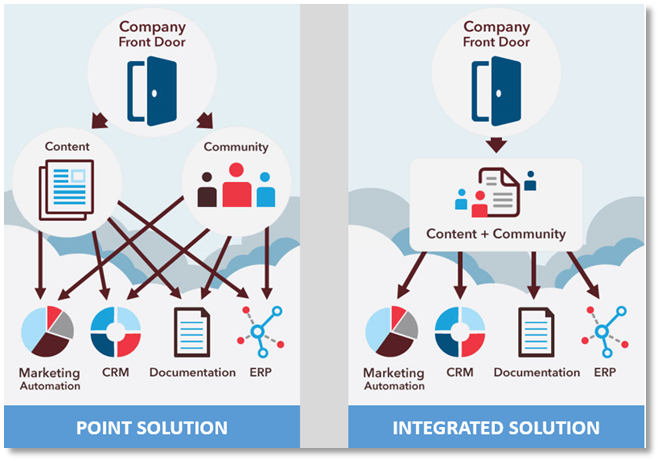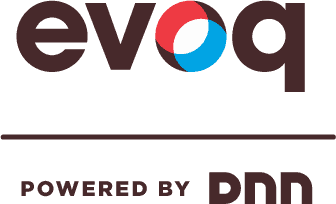
As a marketer, you know that the
primary source of leads
is your website. You’ve been successful generating compelling content and optimizing it for SEO. You instrumented your web site with marketing automation and lead
scoring to gauge visitor and prospect interest. You’ve built highly tuned
landing pages and used A/B testing to determine the best combinations of button
size, button placement and call-to-action text.
Just as you’re getting ready to give yourself a firm pat
on the back, your CMO stops by. She congratulates you for generating
opportunities that can be traced back to your marketing programs. And then she
assigns you a new project:
deploying an online community to increase web site
engagement with both customers and prospects. Why? To increase loyalty and advocacy marketing amongst your
existing customer base; and to increase engagement and accelerate the sales
cycle with prospects.
Primary Option: Creating a Siloed Community Site

Our take: avoid creating siloes out of your website and online community.
Photo source: User dalesbest on
flickr.
As you begin to do your research on possible solutions,
here’s what you’ll find:
- You’ll pay an arm and a leg for the online
community software (e.g. from Jive, Lithium, Telligent [now Zimbra] and others).
- You’ll have to maintain two different systems
for managing content and community: your
Web Content Management System (CMS)
and your new
online community solution.
You’ll struggle to run marketing campaigns, because
you’ll need to coordinate scheduling, promotions and results tracking across
two systems.
Best of Breed is hard to integrate

Photo source: Robert Couse-Baker on
flickr.
The market offers best of breed CMS solutions, and
separately, best of breed online community solutions. If you want a compelling
online presence (via best of breed), you have to
buy software from two
vendors, install and maintain two disparate systems, maintain two data silos
and figure out how to make the user experience similar (forget about
“consistent!”).
Next, you need to do the much harder job of figuring out
how to integrate them on the back-end and integrate each of them into other
systems you manage (e.g. CRM).
Is it possible to do the above? Sure, anything is
possible with
unlimited time, unlimited budget and infinite patience. You
can integrate two disparate software systems from two different vendors and
make them visually similar. You can also put lipstick on a pig.
We wondered: why do that, especially when it doesn’t help
you more effectively achieve ROI?
Let Me Explain with an Analogy
When you go to a
supermarket today, do you go to one building to shop and another building to
ask questions to supermarket employees and talk to other customers? Are
stores built that way? Do we have “integration passageways” between to
shoot people in and out of each building? (Beam me up, Scotty.)
Why shouldn’t an
organization have a
single, fully integrated software system that helps them
manage both content and communities online? Why shouldn’t a company offer
their customers a fully integrated online experience? Why shouldn’t a
company be able to manage their content and community in a singular, holistic
and effective manner?
Well, you can.
The DNN Evoq Suite

The DNN Evoq Suite is designed so you can have a single,
fully integrated software system that will help you manage both content (via
Evoq Content) and communities (via Evoq Social) online. It will offer your
customers and community members with a single holistic immersive online
experience.
Related Resources
- Read how SchoolDude uses our Evoq Suite to manage content and community on their website.
- Read a related blog post on how our integrated solution can remove potholes in the road.
- Download our white paper, "Realizing Your Corporate Site Potential Through Communities."
View Our SlideShare
Here's a related presentation.
Why Content Matters from DNN